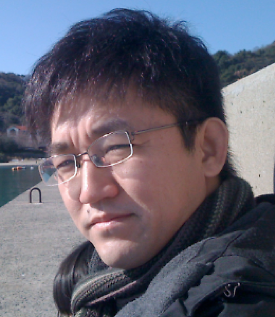Seminar: Evolutionary Design of biosynthetic pathways and regulatory networks

Date
Location
Description
Dr. Daisuke Umeno, Associate Professor at Graduate School of Engineering, Chiba University, Japan, PRESTO, Japan Science and Technology Agency (JST), Japan
E-mail address: umeno@faculty.chiba-u.jp
Title: Evolutionary Design of biosynthetic pathways and regulatory networks
Speaker: Dr. Daisuke Umeno, Associate professor Graduate School of Engineering, Chiba University, Japan, PRESTO, Japan Science and Technology Agency (JST), Japan
Date: November 18, Friday
Time: 11:00 - 12:00
Venue: C209, Level C, Centre building
Abstract: Rapid increase in the repertoires of bimolecular ‘parts’ is enabling the scratch building of the artificial biosynthetic pathways and regulatory networks consisting of multiple components. However, due to the imperfection of the parts, as well as the unpredictability of them, make it has been difficult to properly construct functional biosynthetic pathways and/or genetic circuits. In this talk, I will focus on how complex and precise biosynthetic networks can be built out of imperfect biosynthetic parts.
1. Evolutionary design of the artificial biosynthetic pathways.
Due to the broad specific nature of the enzymes, simple co-expression of biosynthetic enzymes often result in the appearance of hyper-branched, multi-product pathways with little or no target product. Taking the example of the six-enzyme, 15-step pathway toward C50-astaxanthin, a non-natural purple carotenoid [1], I will discuss how we suffered from the promiscuous nature of the enzymes, and how novel approach called “metabolic filtering” or “metabolic band passing” enabled the evolution of the messy pathways into highly efficient and selective pathways, despite that not a single member along the path are catalytically specific by itself.
2. Fast-track construction of functional genetic circuits using directed evolution.
Due to the limited diversity in the specification of regulatory parts, synthetic biologists are making various networks using surprisingly small number of genetic parts. Here, I would like to show how we could use directed evolution techniques to rapidly diversify the specification of the given genetic devices [2,3]. Next, I will introduce similar techniques can be used also for quickly assembling them into complex, yet functional regulatory networks. I also introduce our on-going effort to speed up the design-test-evolve cycle of the genetic switches and circuits.
References
1. M. Furubayashi, et al., A highly selective biosynthetic pathway to non-natural C50 carotenoids assembled from moderately selective engineered enzymes., Nature Communications, 6, 7534 (2015). doi: 10.1038/ncommuns8534K.
2. Ike, et al., Evolutionary design of choline- inducible and –repressible T7-based induction systems. ACS Synthetic Biology, in press (2015). doi: 10.1021/acssynbio.5b00107
3. M. Tominaga, et al., Rapid and liquid-based selection of genetic switches using nucleoside kinase fused with aminoglycoside phosphotransferase. PLoS One, 10, e0120243 (2015).
Biography:
1998 Doctor of Engineering, Kyushu University, Japan
1999-2003: Postdoctoral scholar, California Institute of Technology (Frances H. Arnold Lab.)
2003-2005: Senior fellow, University of Washington (Lawrence A. Loeb Lab.)
2005-present: Associate Professor, Chiba University, Japan
Subscribe to the OIST Calendar: Right-click to download, then open in your calendar application.



